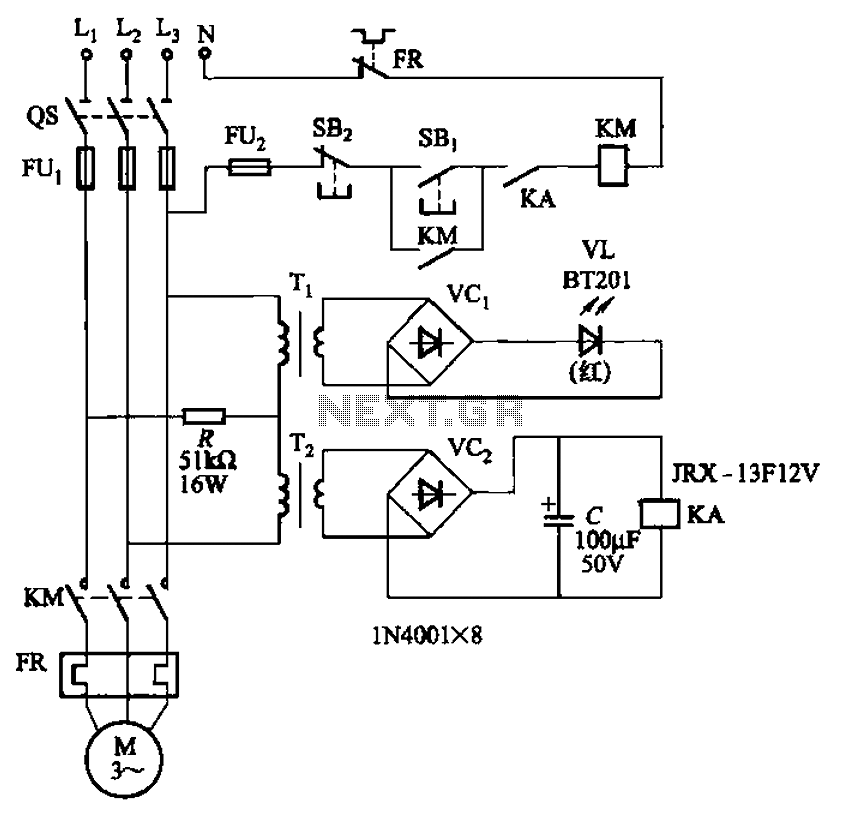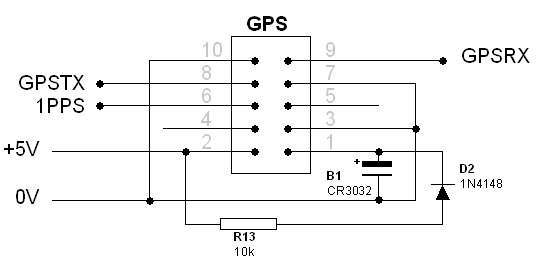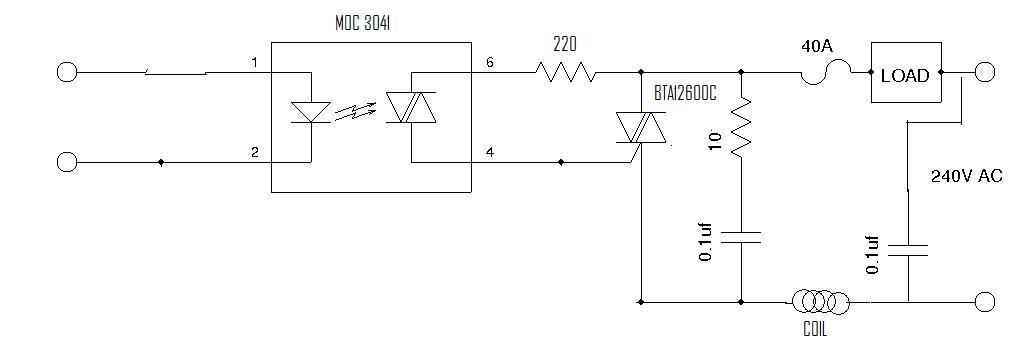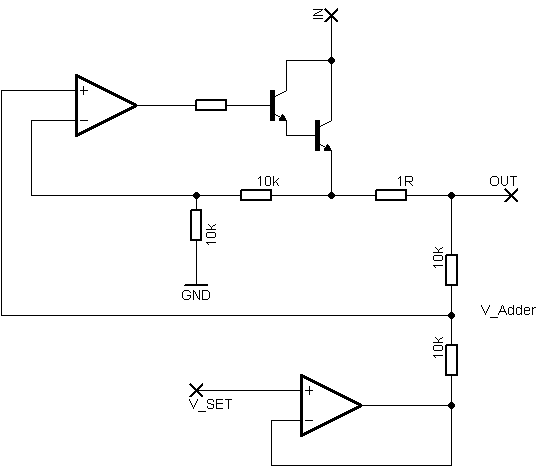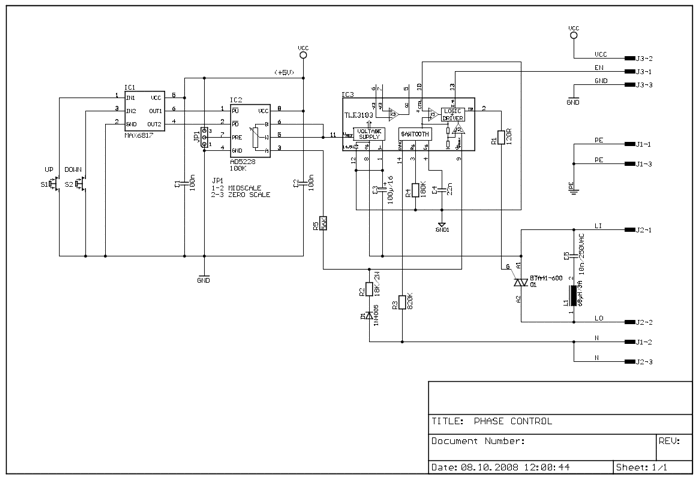
tv remote control jammer
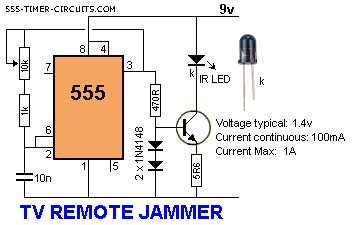
This circuit disrupts the infrared receiver in a television by generating a continuous signal that interferes with the signals from a remote control, thereby preventing the television from detecting channel changes or other commands. This allows for uninterrupted viewing of a selected program without the risk of channel alteration. The circuit is calibrated to emit a signal at 38 kHz. The infrared diode involved is referred to as an infrared transmitting diode or IR emitter diode, differentiating it from a receiving diode known as an IR receiver or IR receiving diode. (A photodiode serves as a receiving diode.) Numerous types of IR emitters exist, making it impractical to assign a single generic number to represent the type of diode used in this circuit. Examples of such diodes include CY85G, LD271, CQY37N (45), INF3850, INF3880, and INF3940 (30). The current flowing through the IR LED is restricted to 100 mA through the inclusion of two 1N4148 diodes, which create a constant-current configuration in conjunction with a transistor and a 5.6-ohm resistor.
The circuit operates by continuously emitting a modulated infrared signal at a frequency of 38 kHz, which is the standard frequency used by many remote control devices. This modulation is essential for effectively confusing the TV's infrared receiver. The IR emitter diode is driven by a transistor that is configured to switch on and off rapidly, creating the necessary modulation. The two 1N4148 diodes are connected in such a way that they limit the current through the IR LED, ensuring that it operates within safe parameters and prolongs its lifespan.
The choice of the resistor value (5.6 ohms) is critical as it helps to set the appropriate current level through the circuit to maintain the desired output without overheating the components. The transistor acts as a switch; when activated, it allows current to flow through the IR LED, emitting the infrared light. The circuit can be powered by a standard DC power supply, with careful attention given to the polarity to prevent damage to the components.
Overall, this circuit serves as an effective tool for creating a localized interference with infrared signals, making it particularly useful in situations where uninterrupted viewing is desired. It is important to note that while this circuit can provide temporary relief from unwanted channel changes, it should be used responsibly and ethically, as it interferes with the intended functionality of remote-controlled devices.This circuit confuses the infra-red receiver in a TV. It produces a constant signal that interferes with the signal from a remote control and prevents the TV detecting a channel-change or any other command. This allows you to watch your own program without anyone changing the channel ! The circuit is adjusted to produce a 38kHz signal. The IR dio de is called an Infra-red transmitting Diode or IR emitter diode to distinguish it from a receiving diode, called an IR receiver or IR receiving diode. (A Photo diode is a receiving diode). There are so many IR emitters that we cannot put a generic number on the circuit to represent the type of diode.
Some types include: CY85G, LD271, CQY37N (45 ), INF3850, INF3880, INF3940 (30 ). The current through the IR LED is limited to 100mA by the inclusion of the two 1N4148 diodes, as these form a constant-current arrangement when combined with the transistor and 5R6 resistor. 🔗 External reference
The circuit operates by continuously emitting a modulated infrared signal at a frequency of 38 kHz, which is the standard frequency used by many remote control devices. This modulation is essential for effectively confusing the TV's infrared receiver. The IR emitter diode is driven by a transistor that is configured to switch on and off rapidly, creating the necessary modulation. The two 1N4148 diodes are connected in such a way that they limit the current through the IR LED, ensuring that it operates within safe parameters and prolongs its lifespan.
The choice of the resistor value (5.6 ohms) is critical as it helps to set the appropriate current level through the circuit to maintain the desired output without overheating the components. The transistor acts as a switch; when activated, it allows current to flow through the IR LED, emitting the infrared light. The circuit can be powered by a standard DC power supply, with careful attention given to the polarity to prevent damage to the components.
Overall, this circuit serves as an effective tool for creating a localized interference with infrared signals, making it particularly useful in situations where uninterrupted viewing is desired. It is important to note that while this circuit can provide temporary relief from unwanted channel changes, it should be used responsibly and ethically, as it interferes with the intended functionality of remote-controlled devices.This circuit confuses the infra-red receiver in a TV. It produces a constant signal that interferes with the signal from a remote control and prevents the TV detecting a channel-change or any other command. This allows you to watch your own program without anyone changing the channel ! The circuit is adjusted to produce a 38kHz signal. The IR dio de is called an Infra-red transmitting Diode or IR emitter diode to distinguish it from a receiving diode, called an IR receiver or IR receiving diode. (A Photo diode is a receiving diode). There are so many IR emitters that we cannot put a generic number on the circuit to represent the type of diode.
Some types include: CY85G, LD271, CQY37N (45 ), INF3850, INF3880, INF3940 (30 ). The current through the IR LED is limited to 100mA by the inclusion of the two 1N4148 diodes, as these form a constant-current arrangement when combined with the transistor and 5R6 resistor. 🔗 External reference

